|
|
 |
|
|
German Vehicle Numbering
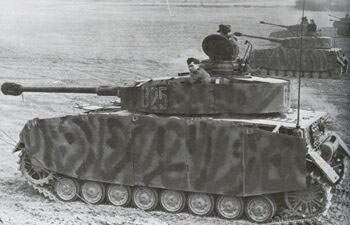 |
Panzer Markings
Evan takes us through the intricacies of German tank numbering.
You’ve just finished painting a platoon of German tanks and you want to add that finishing touch to a superb paintjob! Turret Numbers! But what do they mean? Can I put on any old thing and will anyone notice? (Probably!). The purpose of this article is to explain how the German Wehrmacht numbered their AFV’s and what styles were commonly applied. I’ll also add a few variations as well.
Left: A Panzer IV H 825 in the Ukraine, in the background the rest of its platoon advance, most likely 821-824.
|
The "Three Digit System"
The German army managed to defeat numerically superior (and sometimes technically superior) opponents by simply being better organized and making the best use of contemporary command and control techniques and equipment. No flags waving here, unlike the Soviet or French armies, but the Platoon and Company commanders still needed to be able to control their units in action. So the Germans adopted a Three Digit System for numbering their AFV’s. The Panzer units started the war using this system and gradually the other armoured organizations adopted it as well.
|
 |
Stumgeschutz units were using this numbering system by 1942 and Panzergrenadier halftracks were numbered officially from 1944 along with the Aufklarungs/Recce units.
The Three Digit System simply identified the company/platoon/individual vehicle in that order and allowed the commander to direct his units effectively on the battlefield. For example a vehicle numbered "223" would mean: 2nd company - 2nd platoon -3rd vehicle.
|
| A Panzer Divisions Panzer Regiment normally had two Battalions each of four companies and the companies were numbered consecutively from 1 to 8 (prior to 1941 Panzer Divisions could have two Regiments of two Battalions each). Any extra companies added on such as Tiger or Sturmgeschutze simply followed on in the same sequence. Most companies consisted of a HQ and 3 to 4
platoons and each platoon could have four or five vehicles. So how does
this translate to the turrets? |
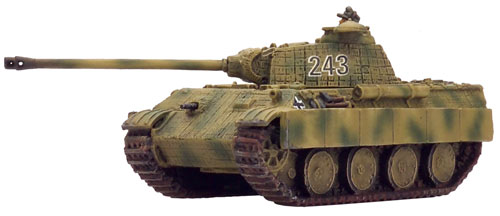
Above: Panther A number 243, 2nd company, 4 platoon, 3rd Tank.
|
|


|
Regimental commanders and staff used "R0" series so the regimental commander could be R00 or R01 and his Adjutant would be either R01 or R02.
Battalion command vehicles used the Roman numerals I01, I02 (for the first battalion) or II01, II02 (for the second battalion).
|
| 1st Company HQ AFV’s |
100 & 101 (or 101 & 102)
|
1st platoon
2nd platoon
3rd platoon
|
111(platoon commander), 112, 113, 114 & 115
121 " " , 122, 123, 124 & 125
131 " " , 132, 133, 134 & 135
|
| 5th Company HQ AFV’s |
500 & 501
|
1st platoon
2nd platoon
|
511(platoon commander), 512, 513, 514 & 515
521 " " , 522, 523, 524 & 525
|
...and so on... It’s a relatively easy system to decipher which is why some German units created variations to confuse the enemy - they could work it out too! And they often targeted the command tanks by the numbers on the turret. This lead to variations such as only using single or double digits and classic examples of this are the famous Deutches Afrika Korp Panzer Divisions, 15 Panzer Division numbered it’s tanks with a single digit which was the company number only whereas 21 Panzer Division used two digits which were the platoon and individual vehicle numbers, but they were still based on the standard system.
Right: Panzer III #2 of the 15th Panzer Division being used as cover by Eight Army infantry.
|
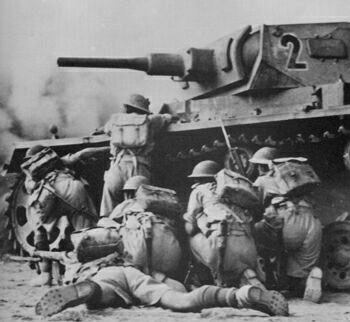 |
 |
Variations on a Theme
Because the enemy became adept at finding the command vehicles subtle variations were used to disguise these important commanders. One such subterfuge was to use a non-existent company number such as 900 or 901 for the regimental command vehicles if the regiment had 8 companies or maybe 001 and 002 instead.
|
Sometimes whole Divisions made use of a variation for it’s entire Panzer complement such as 12th SS "Hitler Jugend" Panzer Divisions’ 12th Panzer Regiment. They started numbering their vehicles within the platoons from 5, so, the platoon commanders vehicle in the 1st company 1st platoon instead of being (as above) "111" it became "115" and the rest of the platoon became 116, 117, 118 & 119.
|
 |
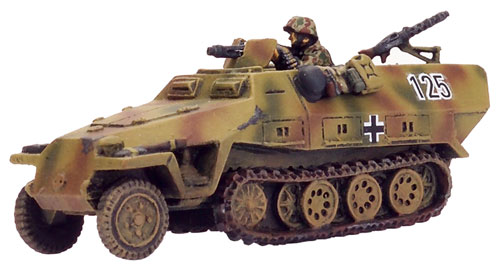
|
The Panzer grenadier units had been using the
same system on their halftracks for some time before it was officially
recognized in July 1944 and another potentially confusing variation
becomes apparent here, namely these units could have more than 9
companies so vehicles in the 10th and above companies would have four
digit numbers, just treat the first two numbers as one entity - the
company number.
Left: Sd Kfz 251/1 numbered 125. |
|
Along the same lines the Waffen SS Divisions involved in the epic struggle at Kursk had up to 13 companies of Panzers in their Panzer Regiments and, each had at least one Tiger company included in that total but numbered these all differently for example: 1st SS Leibstandarte "Adolf Hitler" (or LAH) used 13th company for it’s Tigers and numbered them 1301, 1302 for the command vehicles and the first platoon was 1311,1312,1313 etc.
2nd SS "Das Reich" used the 8th company but numbered the Tigers beginning with S (for Schwerer or heavy tank) and consecutively S11, S12, S13 etc.
|
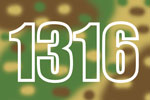 |
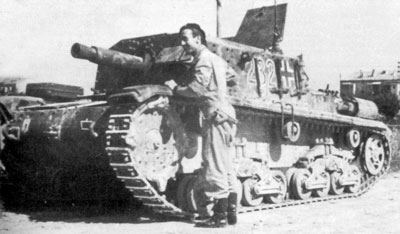
|
Sturmgeschutze units were under the control of the artillery and started the war with individual names then progressed to artillery battery markings, usually a letter and number to denote the battery and gun number in the battery. Then finally, in 1942, the Stug’s that were in independent Brigades or Abteilungen (not issued to a Panzer or PanzerGrenadier Division) started using the same 3 digit system as well.
The three digit system also applies to the Panzerjager units equipped with vehicles like Marders and Nashorn. |
What did they look like?
At the beginning of the war these numbers were small white markings on a rhomboidal shaped number plate on the sides of AFV’s but as a consequence were hard for the commanders to see. So after Poland large white numbers were used instead but these were too easy to see and, like the Allied White star later in the war, were used as aiming points for enemy anti tank gunners! Back to the drawing board. Finally low visibility markings were developed that commanders could see but the enemy couldn’t, theoretically anyway!
|
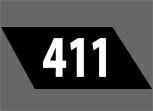 |
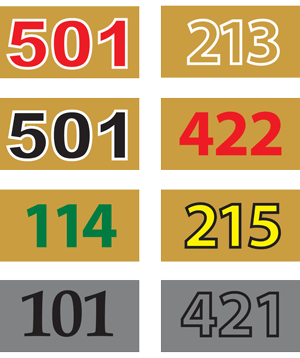 |
Common styles were:
Red with white outline - very common
White outline only - very common
Red only
Yellow with black outline
Green (usually over the sand colour only)
Solid black
Black outline
Black with white outline - very common
This list is by no means exhaustive but should give you somewhere to start. And my favourite trick is to use the Battlefront German turret number decals (which are white outline only) and fill in the middle with red or black paint and a fine brush to achieve neat and tidy numbers with coloured centers. Happy numbering!
Evan |
|
|
|